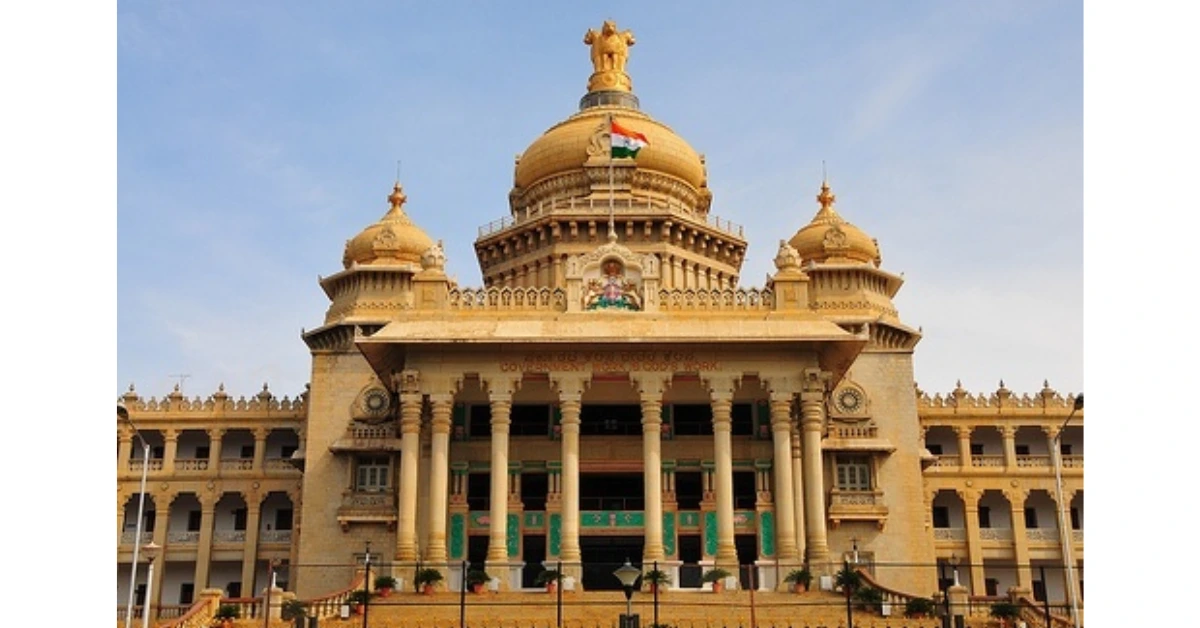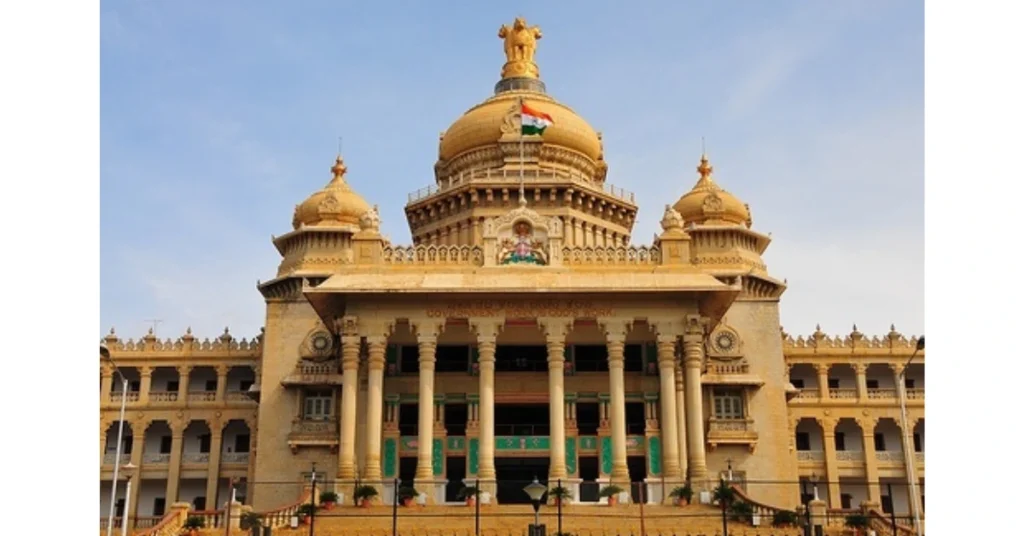The Akrama Sakrama scheme is a significant government initiative in Karnataka designed to regularize certain unauthorized building constructions and plot formations across the state. This policy was introduced to address the widespread issue of building byelaw violations, offering property owners a one-time opportunity to bring their properties into the legal fold by paying a prescribed penalty. This guide will explain the background of the Akrama Sakrama policy, its eligibility criteria, application process, and its crucial current status.
When Was It Launched and Why?
The scheme was launched to address unplanned urban growth, especially in Bengaluru. It aims to legalize properties with small violations, helping owners get legal titles (A Khata) and improving city planning while increasing revenue for local authorities.
Eligibility Criteria For Buildings Under Akrama Sakrama
To qualify for this Karnataka building violation scheme, properties and buildings must meet several specific conditions laid out by the government.
Unbeatable Price 5-Star Rated Partner! 2200+ Shades! Top Quality Paint Free Cancellation!

Get a rental agreement with doorstep delivery

Find the BEST deals and get unbelievable DISCOUNTS directly from builders!

5-Star rated painters, premium paints and services at the BEST PRICES!
- The property must have been constructed on or before the official cut-off date of October 19, 2013.
- Setback violations in residential buildings must not exceed 50% of the prescribed limit.
- For commercial buildings, setback violations must not be more than 25% of the prescribed limit.
- The scheme does not apply to buildings constructed on fully encroached public lands, park areas, or lakebeds.
- The land use violations must also be within the permissible limits set by the scheme.
Documents Required for Application
When the scheme is actively accepting applications, property owners need to submit a comprehensive set of documents for the authorities to verify the claim.
- Application Form: The prescribed application form, duly filled with all property and owner details.
- Title Documents: A copy of the registered sale deed or title deed establishing ownership.
- Property Tax Receipts: The latest property tax payment receipt to show the property is in the municipal records.
- Building Plan: A copy of the previously approved building plan, if one exists.
- Photographs: Recent photographs of the building showing the exterior and the violations.
- Survey Sketch: A survey sketch of the property showing its dimensions and location, prepared by a licensed surveyor.
How to Apply for Akrama Sakrama?
The application process for the scheme is designed to be managed at the level of the local urban body, such as the BBMP in Bengaluru.
- Step 1: Obtain the official application form for the Akrama Sakrama scheme from the respective municipal office or its website.
- Step 2: Carefully fill out the form, providing accurate details of the property, the owner, and the nature of the violation.
- Step 3: Attach self-attested copies of all the required documents as listed above.
- Step 4: Pay the initial application processing fee as prescribed by the authority.
- Step 5: Submit the completed application file at the designated counter in the municipal office.
- Step 6: Make sure to collect an acknowledgement receipt with an application number for future reference and for tracking the status.
How to check Akrama Sakrama Application Status?
Once your application is submitted, you can keep track of its progress through the channels provided by your local municipal authority.
- Step 1: Visit the official website of your urban local body (e.g., BBMP, BDA).
- Step 2: Look for a dedicated section or link for the “Akrama Sakrama” scheme.
- Step 3: Enter your application number or property identification number in the tracking portal.
- Step 4: The portal will display the current Akrama Sakrama application status of your file, whether it is under review, pending inspection, or approved.
Regularisation Fee Structure
The one-time penalty or regularisation fee under the Akrama Ssakrama scheme is not a flat rate. The Akrama Sakrama penalty calculation is based on the guidance value of the property in that area and the extent of the violation.
| Percentage of Setback Violation | Penalty Fee (as a % of the Market Value of the Violated Portion) |
|---|---|
| Up to 25% | 6% of the guidance value |
| Between 25% and 50% | 8% of the guidance value |
Note: The fee structure can vary for land use violations and is subject to final government notification.
Key Features of the Scheme
The Akrama Sakrama scheme in Karnataka has several defining characteristics that property owners should be aware of.
- It is intended as a one-time opportunity for property owners to regularize violations.
- The scheme has a strict cut-off date; only properties built before October 19, 2013, are eligible.
- It covers various violations, including setback deviations, building plan violations, and unapproved plot formations.
- The penalties are calculated based on the property’s guidance value, making it proportionate to the market price.
- A successful regularization under this scheme is a pathway to obtaining an ‘A Khata’ certificate, which is a valid legal title.
Impact of the Akrama Sakrama Scheme on Property Owners
The scheme, whenever it is fully implemented, is expected to have a transformative impact on the real estate landscape, especially for owners of properties with minor irregularities.
- Legal Recognition: It provides a path to legal status, converting an irregular property into a fully compliant one. For many, this is the only route for the BBMP building regularisation.
- Increased Property Value: An ‘A Khata’ property with a clear title fetches a much higher market value and is easier to sell.
- Eligibility for Bank Loans: Banks and financial institutions do not provide home loans for ‘B Khata’ or irregular properties. Regularization makes the property eligible for loans.
- Access to Civic Amenities: Once a property is brought into the formal records, it is entitled to better civic infrastructure and services from the municipality.
Akrama Sakrama vs B Khata Conversion
Many people wonder about Akrama Sakrama for B-Khata sites. Essentially, the scheme was designed as the primary mechanism for a mass conversion of ‘B Khata’ properties to ‘A Khata’.
| Basis | Akrama Sakrama Regularised Property | Standard B Khata Property |
|---|---|---|
| Legal Status | Legally recognized and compliant. | Exists only for tax purposes; not a valid title. |
| Regularization | Violations have been regularized by paying a penalty. | Contains unauthorized deviations or construction. |
| Loan Availability | Eligible for home loans from all major banks. | Not eligible for home loans. |
| Resale Value | High market value and easy to transact. | Lower market value and difficult to sell. |
| Conversion Path | Has been converted to an ‘A Khata’. | Can only be converted to ‘A Khata’ through a scheme like Akrama Sakrama. |
To understand more about the different types of property documents, you can read our blog on All You Need to Know About Khata.
Current Status of Akrama Sakrama Scheme (2025)
As of July 2025, it is critical for all property owners to be aware of the current legal standing of the Akrama Sakrama scheme. The scheme is currently on hold and is not accepting new applications. Its constitutional validity has been challenged, and the matter is pending before the Supreme Court of India. The state government is awaiting a final verdict from the court before it can proceed with the implementation of the scheme. Therefore, property owners must wait for the court’s final decision.
How NoBroker Can Help with Legal Services?
While the Akrama Sakrama scheme is pending in the courts, understanding the current legal and compliance status of your property is more important than ever. NoBroker’s legal service experts can assist you with comprehensive property title verification and due diligence. We can help you clarify whether your property has an ‘A Khata’ or ‘B Khata’, identify any violations, and advise on the necessary compliance, keeping you well-prepared for any future legal or regulatory developments.
Frequently Asked Questions
Ans: The term comes from the Kannada language, where “Akrama” means irregular or invalid, and “Sakrama” means regular or valid. The scheme’s name translates to “regularizing the irregular.”
Ans: No. As of July 2025, the scheme is stayed by the Supreme Court, and the government is not accepting any new applications pending the final court verdict.
Ans: No, the scheme is not meant for regularizing properties built on fully encroached public lands, parks, or lakebeds. It is only for properties on privately owned land with byelaw violations.
Ans: If an application is rejected, the property remains in the “unauthorized” category. The owner may have to rectify the violations or face action from the municipal authorities.
Ans: Yes, it is likely. Once your property is regularized and converted to an ‘A Khata’, it will be assessed at the standard property tax rates, which might be higher than what you were paying previously.
Recommended Reading

Loved what you read? Share it with others!
 Jessica,Author
Jessica,Author
Jessica loves to read about everything and is currently deeply interested in real estate. She has 5 years of intense research experience and can bring before you well-informed articles. Jessica enjoys writing and this is seen in her work.
Source link




